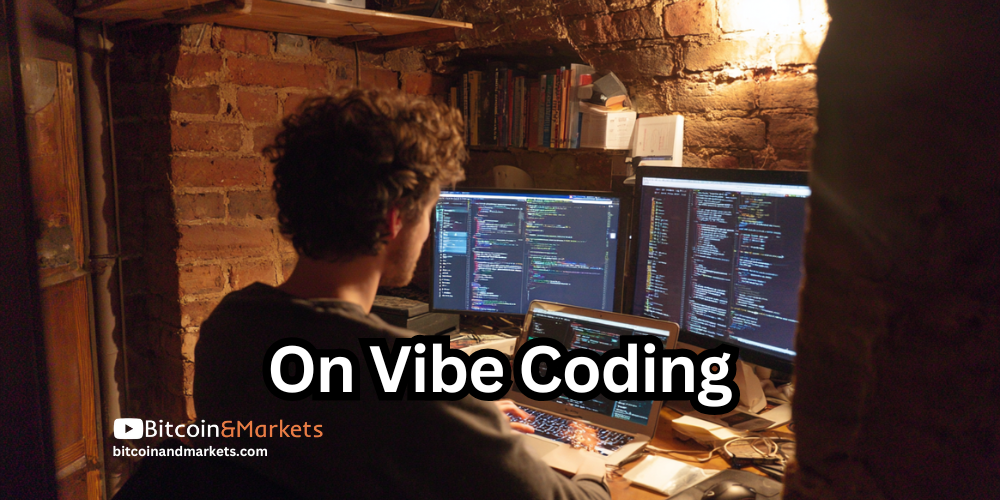Economic Arguments Against Vibe Coding
Opportunity cost, noise filtering, and the myth of productivity from DIY AI apps.

AI has made it intoxicatingly easy to spin up an app from a shower thought. Describe your ‘workflow optimizer for busy dads,’ and by evening you’ve got login screens, a dashboard, and a database. It feels like an insane productivity hack because it lets anyone code an app in a day, work that once took a team of trained coders weeks. Don’t worry about whether you’ll ever use the app, whether it will be a net time-saver, or whether it will actually make you more productive. The only thought that gets reinforced, over and over, is that this is a game changer.
But the economics of building a successful app go beyond the time and expense of creating it. The market itself has a built-in selection mechanism; input costs have traditionally acted as a vetting process against bad ideas.
Opportunity Cost and Comparative Advantage
Every hour spent vibe coding is an hour not spent on the work that compounds your edge. That tradeoff is the essence of opportunity cost. Time is the scarce resource. If your highest-value activity is selling, writing, managing clients, researching, or leading a team, then time diverted into building an app is time taken from the activity that moves your scoreboard.
Comparative advantage says you are most valuable when you spend your time where your relative strength is greatest. AI can help you write code, but it does not erase your unique advantages in domain knowledge, relationships, judgment, and distribution. A real estate agent who wins listings, a nurse manager who improves staffing outcomes, or a researcher who generates trusted insights creates more value by deepening those strengths and partnering with a builder, not by becoming a part-time software engineer.
Choosing specialization is a virtue at both the personal and societal level. Personally, it compounds skill, reputation, and network effects. Socially, it raises total output because people trade what they do best for what others do best. The market’s selection mechanism emerges from that coordination. When you honor your edge, you reduce noise and increase signal for everyone.
Signal vs. Noise
Signal detection is one of the most overlooked costs in economics today. When the internet first emerged, people talked about the democratization of information, but few anticipated how noise could drown out the signal. As we produce more data, detecting useful signal becomes more expensive.
The cost is not only financial, though it can include paying for proprietary information. We also pay with our attention, with time taken from other valuable pursuits, and with our physical and mental health. When the noise takes the form of propaganda or disinformation, it can attack our free will and our institutions. If we do not pay the cost to filter the noise, we could find ourselves in a Marxist dystopia within a few years.
In computing terms, noise looks like spam or a DDoS attack. When information generation is essentially free, producing massive volumes to attack or influence a target is dangerously cheap. Networks counter this with waiting periods and rate limits that impose a type of cost. Bitcoin addresses it with limited block space and fees. Any filter, however, carries a cost, and that cost can outweigh the benefit of using the technology in the first place.
AI has this problem. It allows the creation of very cheap content, which makes such content a perfect vector for propaganda and for imposing costs on you and society. If everyone can build an app, you will get hundreds of millions of apps in the United States alone, and most will go unused. That could mean hundreds of millions of days of work wasted on apps only their creators thought were needed, with no realized productivity benefit. That is a massive societal cost of noise.
Signal is rare because it requires alignment with real demand, not just personal enthusiasm. The market is a signal extractor; vibe coding is a noise generator. If you push every brainstorm into production, the base rate says you are adding noise to your life, not clarity.
Identifying Real Problems
Most vibe-coded projects begin with a conviction that you have spotted a real problem. Often you have not. There is a useful old warning called Chesterton’s Fence: do not tear down a fence until you know why it was put up. Many seemingly clunky processes, norms, or “inefficiencies” survive because they encode trade-offs and constraints you have not met yet, such as compliance, reliability, coordination costs, habit formation, and social expectations. Sometimes fixing one problem creates two new ones.
Identifying real problems has always been the entrepreneur’s challenge, and markets are the natural mechanism that filters good ideas from bad ones. They separate signal from noise and truly productivity-enhancing ideas from vibes.
If you want to vibe code an app in your free time, go for it and have fun, but recognize that this is not a market-driven process. It is a feelings-driven experiment. Markets identify whether a problem exists at all. Prices, adoption, churn, and willingness to switch reveal where pain is real, widespread, and worth paying to remove. Vibe coding is often a solution in search of a problem.
Conclusion
Vibe coding is not a revolution in productivity. It is a subsidy to unvetted ideas that ignores opportunity cost and comparative advantage, pulling you away from the work where you create the most value. It multiplies noise and shifts the rising cost of filtering that noise onto you and society. It replaces market feedback with shower thoughts, so imagined problems pass as targets and unpriced experiments pose as products. Real progress comes from specialization working with markets: identify a real problem, prove demand, earn adoption, then build. As a hobby it can be fun. As an economic strategy it is mostly a tax on time and attention, not a path to value.




